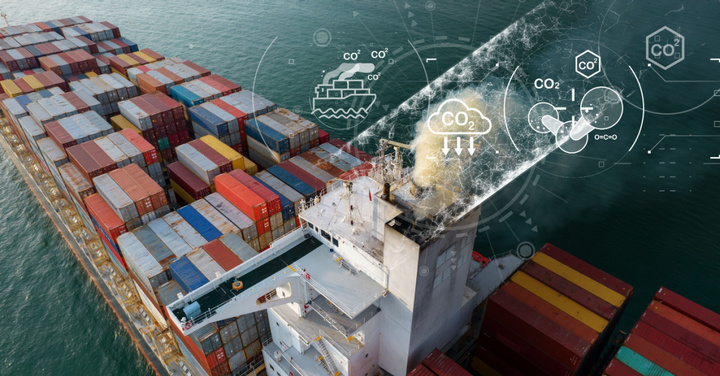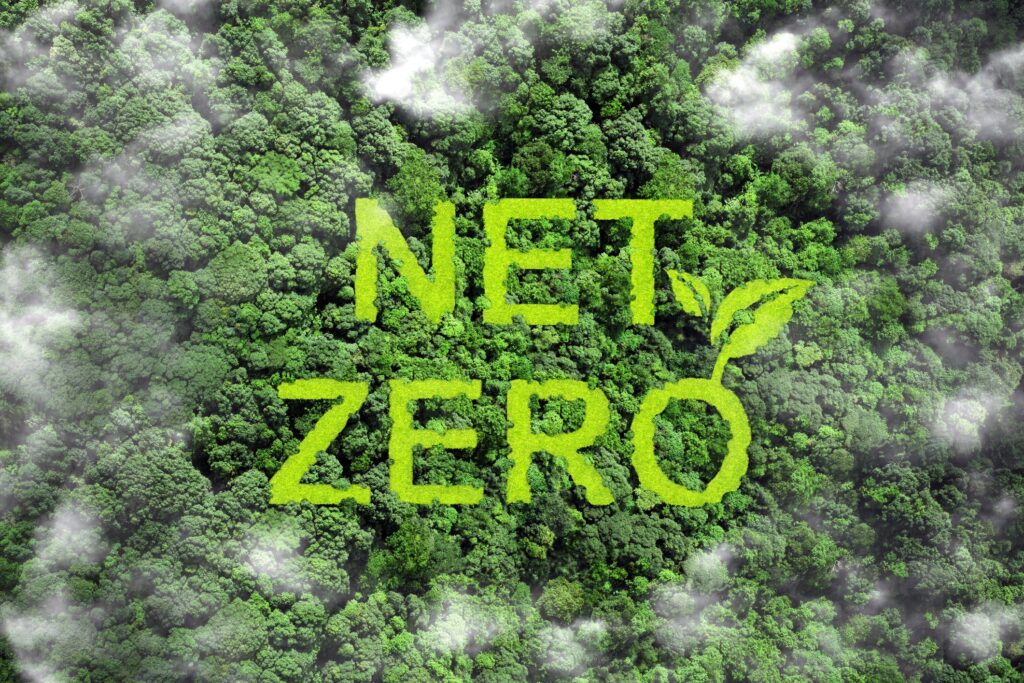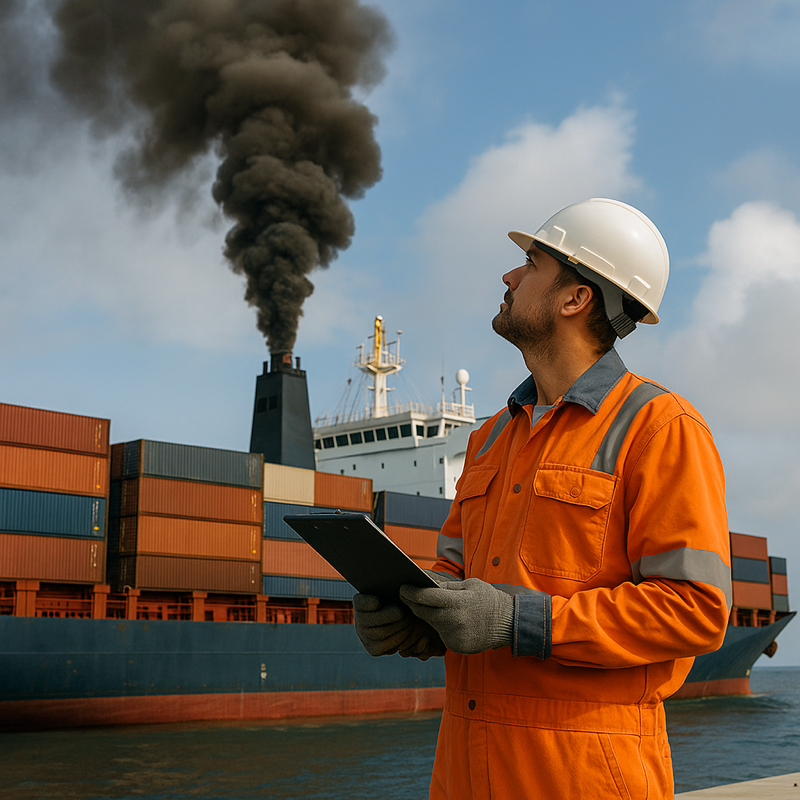As the world becomes increasingly aware of the impact of carbon emissions on the environment, companies are looking for ways to mitigate their carbon footprint. Carbon offsetting is a common strategy, but there is also carbon insetting, which allows companies to take a more proactive role in reducing emissions and contributing to climate action. With an approach that includes both carbon offsetting and carbon insetting, companies can have a greater environmental impact while creating sustainable and resilient businesses.
This article explores carbon insetting, the benefits of investing in carbon insets, and three strategies companies can use to reduce their carbon footprint in their supply chains. Carbon insets are essential to any supply chain decarbonization strategy, and companies that take a holistic approach to sustainability will be better equipped to meet future challenges.
What is Carbon Insetting in the Supply Chain?
Carbon insetting is a strategy that companies use to offset their carbon emissions by investing in emission reduction within their own value chain, rather than simply buying carbon offsets from outside sources. Carbon insetting is seen as a more sustainable and impactful approach than purchasing carbon offsets, as it helps prevent carbon emissions from being released into the environment.
A company reducing carbon emissions within its supply chain might consider some of the following strategies:
- Working with suppliers to improve energy efficiency – Companies can work with their suppliers to understand the amount of energy they consume and explore options for more efficient equipment and processes.
- Reducing waste – This might involve implementing strategies like recycling or composting programs or optimizing packaging and shipping practices to reduce waste.
- Optimizing transportation routes and reducing empty miles – Carriers and companies in charge of their supply chain transportation can use data and technology to plan more efficient routes that minimize distance traveled and reduce the number of empty trucks on the road for less wasted fuel.
Carbon Insets vs. Carbon Offsets
The difference between a company investing in carbon insets and carbon offsets is the source of the emissions reduction.
When a company invests in carbon offset projects, it typically invests in projects that reduce greenhouse gas emissions outside its own operations or value chain. For example, a company might purchase carbon offsets from a large-scale renewable energy project or a reforestation project. The idea is that by investing in these projects, the company can offset the emissions that are necessary to operate as a functioning business.
On the other hand, when a company focuses on reducing carbon emissions from its own supply chain, it is working to directly reduce the emissions generated by its activities and the activities of companies it has hired, like transportation providers. Scope 1 emissions, which come directly from the company itself, might involve implementing more sustainable practices, like going paperless. For Scope 2 emissions, which are from purchased electricity, steam, heating, or cooling, companies can reduce their emissions by installing on-site solar panels. For Scope 3 emissions, which are from any other part of the value chain, shippers may choose to work with carriers that use more fuel-efficient vehicles.
Companies that invest in insetting not only mitigate their environmental impact but also create sustainable and resilient businesses. By focusing on both carbon offsetting and carbon insetting, they have the potential for a greater impact on the environment.
Why Invest in Carbon Insets?
There are several reasons why companies may choose to invest in carbon insets—for the good of the environment, to follow sustainability regulations, and for the good of the business. But the benefits of carbon insetting go deeper than what companies gain through carbon offsetting alone.
Building Resilience through Resource Management
By investing in more sustainable resources, companies can gain a competitive advantage of resilience for their supply chains. Sustainable resources mitigate risks associated with climate change, resource scarcity, and regulatory changes. Companies can reduce their dependence on finite resources and minimize their carbon footprint. One example is raw materials. If companies use sustainable sources of these materials, they can have greater confidence in the future of these materials in the long term. This can lead to more efficient and agile supply chains that are better equipped to handle unexpected events.
Concentrate on Community
Insetting enables companies to focus on the environmental impact on the communities they’re in and around. By investing in sustainability, they are investing in addressing the local environmental concerns. Both the communities and the business care about the outcomes, which can lead to long-term relationships with local stakeholders and improved brand reputation. Sustainability inherently has the benefit of helping both people and the environment, and in this way, the company’s positive impact extends well beyond its bottom line.
Integrated Sustainability Ambitions
When a company uses insetting strategies, sustainability becomes a fully integrated component of its supply chain. It isn’t simply an add-on or afterthought, like if a company was using irresponsible practices when manufacturing a product, for example, but purchasing carbon credits to improve its image. Integrating sustainability means the company embeds its core values into its business practices, fully demonstrating them instead of making claims without supporting action. This can lead to increased customer loyalty and a stronger sense of purpose and identity within the company for its long-term benefit.
3 Carbon Insetting Strategies for Your Supply Chain
Companies can find numerous carbon insetting opportunities if they closely examine their current emissions within the value chain. For those looking for a place to start, here are three areas of opportunity.
1. Revitalizing Aging Equipment
Older equipment often operates inefficiently and consumes more energy, emitting higher levels of carbon. By decommissioning these older systems, companies can replace them with more energy-efficient alternatives, which is an effective decarbonization strategy and can save costs over time. Regular equipment maintenance also ensures that it runs at peak efficiency, minimizing emissions from inefficient operation.
2. Choosing Sustainable Fuels
Using sustainable fuels is an important step for companies mitigating climate change and reducing carbon emissions in the transportation segment of their supply chain. Biofuels, hydrogen, or electricity generated from renewable sources can significantly reduce a company’s carbon footprint, as can investing in electric transportation assets. The Inflation Reduction Act of 2022 is aimed at helping American workers and promoting green energy initiatives to combat climate change, providing tax incentives for fleet owners and operators who purchase electric semi-trucks.
3. Optimizing Routing
Companies can significantly reduce unnecessary carbon emissions by optimizing routing for their transportation and logistics. Efficient routing minimizes the distance vehicles travel, reducing fuel consumption and the associated carbon emissions. Drivers using best practices, like spending less time idling, can further reduce emissions. With the help of analytics and optimization software, companies can make better decisions regarding vehicle routes and transportation modes. This approach can lead to cost savings, time savings, and increased efficiency.
Carbon Insets: An Essential Component of any Supply Chain Decarbonization Strategy
A web search for the phrase “carbon offsetting” returns around 24 million search results, but “carbon insetting” returns just a third of that, about 8 million results. While there is often more attention on the concept of offsetting, insetting is an essential component of a broader supply chain decarbonization strategy. Investing in carbon offset projects is not enough for companies to reach their full potential for a positive environmental impact.
Companies must adopt a holistic approach that takes advantage of a range of strategies. It starts with data analysis using proven frameworks for emissions measurement, which then informs emissions mitigation efforts. This approach enables companies to identify and prioritize the most significant sources of emissions within their supply chains and develop targeted decarbonization strategies. By combining meaningful carbon insetting with carbon offsetting for unavoidable emissions, companies can put forth their best effort toward sustainability.
Tackle Supply Chain Decarbonization with Greenabl
Greenabl has partnered with Searoutes for insetting, powered by industry-leading accuracy for carbon emissions measurement, and Cloverly for connecting companies to quality, verified carbon offset projects. With a decarbonization strategy that applies both, companies can maximize their impact.
With Greenabl, shippers have access to a platform and best-in-class research and consulting services to help them achieve greater sustainability. Carriers can more effectively reduce emissions with a proven framework for measuring emissions, assisted by fleet planning services. To learn more about Greenabl, reach out to us today.


